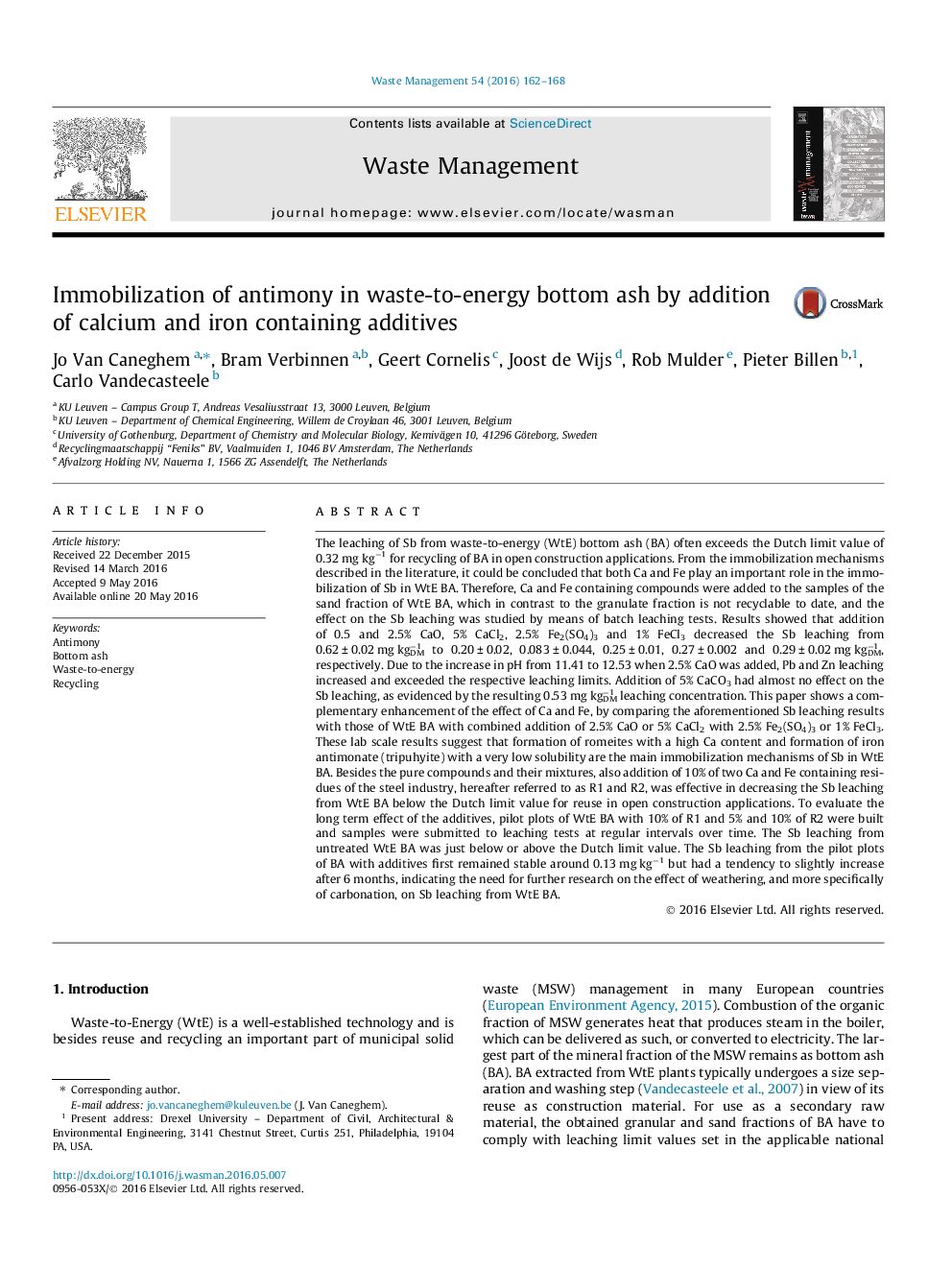| کد مقاله | کد نشریه | سال انتشار | مقاله انگلیسی | نسخه تمام متن |
|---|---|---|---|---|
| 6353627 | 1622632 | 2016 | 7 صفحه PDF | دانلود رایگان |
- Sb leaching impedes reuse of WtE bottom ash as construction material.
- Addition of Ca or Fe containing compounds decreases Sb leaching below the legal limit.
- Ca and Fe have different stabilization mechanisms.
- In test plots the Sb leaching remained below the limit for at least 1Â year.
The leaching of Sb from waste-to-energy (WtE) bottom ash (BA) often exceeds the Dutch limit value of 0.32 mg kgâ1 for recycling of BA in open construction applications. From the immobilization mechanisms described in the literature, it could be concluded that both Ca and Fe play an important role in the immobilization of Sb in WtE BA. Therefore, Ca and Fe containing compounds were added to the samples of the sand fraction of WtE BA, which in contrast to the granulate fraction is not recyclable to date, and the effect on the Sb leaching was studied by means of batch leaching tests. Results showed that addition of 0.5 and 2.5% CaO, 5% CaCl2, 2.5% Fe2(SO4)3 and 1% FeCl3 decreased the Sb leaching from 0.62 ± 0.02 mg kgDMâ1 to 0.20 ± 0.02, 0.083 ± 0.044, 0.25 ± 0.01, 0.27 ± 0.002 and 0.29 ± 0.02 mg kgDMâ1, respectively. Due to the increase in pH from 11.41 to 12.53 when 2.5% CaO was added, Pb and Zn leaching increased and exceeded the respective leaching limits. Addition of 5% CaCO3 had almost no effect on the Sb leaching, as evidenced by the resulting 0.53 mg kgDMâ1 leaching concentration. This paper shows a complementary enhancement of the effect of Ca and Fe, by comparing the aforementioned Sb leaching results with those of WtE BA with combined addition of 2.5% CaO or 5% CaCl2 with 2.5% Fe2(SO4)3 or 1% FeCl3. These lab scale results suggest that formation of romeites with a high Ca content and formation of iron antimonate (tripuhyite) with a very low solubility are the main immobilization mechanisms of Sb in WtE BA. Besides the pure compounds and their mixtures, also addition of 10% of two Ca and Fe containing residues of the steel industry, hereafter referred to as R1 and R2, was effective in decreasing the Sb leaching from WtE BA below the Dutch limit value for reuse in open construction applications. To evaluate the long term effect of the additives, pilot plots of WtE BA with 10% of R1 and 5% and 10% of R2 were built and samples were submitted to leaching tests at regular intervals over time. The Sb leaching from untreated WtE BA was just below or above the Dutch limit value. The Sb leaching from the pilot plots of BA with additives first remained stable around 0.13 mg kgâ1 but had a tendency to slightly increase after 6 months, indicating the need for further research on the effect of weathering, and more specifically of carbonation, on Sb leaching from WtE BA.
Journal: Waste Management - Volume 54, August 2016, Pages 162-168
